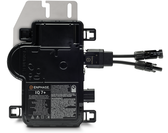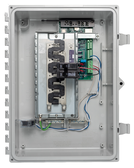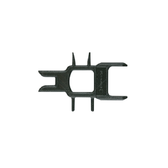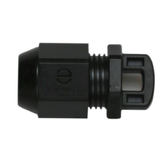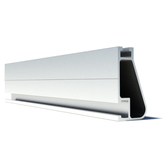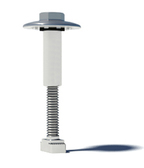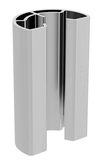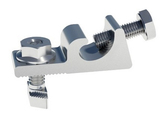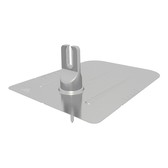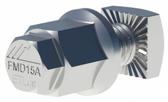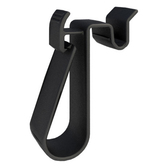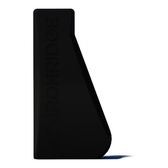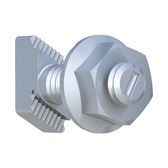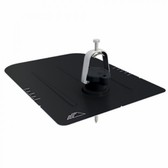 Loading... Please wait...
Loading... Please wait...- Home
- Solaris Blog
- Panasonic Solar Panels: The Complete Review
Products
- Solar Panels
- Solar Panel Kits
- Solar Generators
- Inverters
- Inverter Monitoring
- Inverter Accessories
- Balance of Systems
- Racking and Mounting
- Rails
- Flashings
- Splice Kits
- Stopper Sleeves
- Conduit Mounts
- Attachments
- Brace Assembly
- Base Mount
- Brackets
- Bolts
- Clamps
- Caps
- L-Feet
- Washers
- Skirt
- Lugs
- Tilt Legs
- Hooks
- Stand-Offs
- Ballast Bay
- Top of Pole Mount
- Side of Pole Mount
- Flush Mount Kits
- Ground Mount Kits
- Roof Mount Kits
- Hardware Packages
- Wire Management
- Batteries
- Battery Accessories
- Charge Controllers
- Tools and Supplies
- View All Products
Panasonic Solar Panels: The Complete Review
Posted by Brandi Casey on 10th Sep 2019

Panasonic is a leader in energy efficient, long lasting, premium solar energy technology. Their solar panel series the HIT is the result of the company’s dedication to research and development, which has resulted with their modules having the highest efficiency ratings in the industry. A global leader in electronics, Panasonic is a well-known and respected consumer brand that rapidly became a high-quality leader in solar cell technology.
Panasonic solar panels have, on average, 3-5% greater efficiency ratings than their mid range competitors, and boast a 15 year longer product warranty period as well. When compared to other high cost modules such as LG Solar, Panasonic beats efficiency and pricing averages as well as offers higher output energy over time.
Panasonic solar panels are among the finest tier-one solar panels on the market. The cost of Panasonic solar panels are reflective of their premium technology and exceptional reliability. Their solar panels are often compared with other premium brands such as LG Solar and Solaria, as well as mid-range priced panels such as Canadian Solar and Hanwha Q Cells.
In this complete review of Panasonic solar panels, we will be looking at the following:
- Specifications and Pricing
- Average Cost per Watt Comparison
- Module and Cell Technology
- Warranty Period
- Panasonic Solar System Potential ROI
- And Solaris Recommendations
See Here: Panasonic Solar Panels for Sale
Specifications and Pricing
Panasonic offers the 96-cell HIT series, an industry leading series in terms of technology, efficiency and warranty. The 96 cell design allows for less cell degradation over time, as well as higher energy efficiency ratings over the modules twenty five year warranty period. The number of cells are important to note as the design needs to be carefully paired with the correct inverter setup. That being said, the series is highly compatible and works with a number of inverter solutions from popular brands like Enphase and SolarEdge.
The modules can be used in residential and commercial systems as well as roof or ground mounted. They have a wider design than many panels on the market today, so this is important to consider if you are working with limited roof space. The HIT modules are compatible with all solar racking solutions from Tamarack to SnapNrack to IronRidge and more.
VBHN320KA03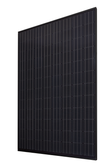
|
VBHN325KA03 
|
VBHN325SA17
|
VBHN330SA17
|
|
| Watts: | 320 | 325 | 325 | 330 |
| Series: | HIT | HIT | HIT | HIT |
| Pricing: |
See Price Here |
See Price Here |
See Price Here |
See Price Here |
| Efficiency: | 19.10% Panel / 21.50% Cell | 19.40% Panel / 21.80% Cell | 19.40% Panel / 21.76% Cell | 19.70% Panel / 22.09% Cell |
| Dimensions: | 65.30 x 43.70 x 1.57 Inches | 65.30 x 43.70 x 1.57 Inches | 62.60 x 41.50 x 1.60 Inches | 62.60 x 41.50 x 1.60 Inches |
| Weight: | 40.81 lbs | 40.81 lbs | 40.81 lbs | 40.81 lbs |
| Cells: | 96x Mono Cells | 96x Mono Cells | 96x Mono Cells | 96x Mono Cells |
| Isc: | 5.89 Amps | 5.94 Amps | 6.03 Amps | 6.07 Amps |
| Voc: | 70.50 Volts | 70.90 Volts | 69.60 Volts | 69.70 Volts |
| Imp: | 5.46 Amps | 5.50 Amps | 5.65 Amps | 5.70 Amps |
| Vmp: | 58.70 Volts | 59.20 Volts | 57.60 Volts | 58.00 Volts |
| Docs: |
Specs Warranty |
Specs Warranty |
Specs Warranty |
Specs Warranty |
In terms of efficiency, the most comparable manufacturer to Panasonic is LG Solar, which also has efficiency ratings between 19 to 22 percent. Their warranty periods are the same, however Panasonic promises more overall output power at the twenty five year benchmark of your solar modules.
Compare: LG Solar vs Pansonic Modules: What’s Best?
Average Cost per Watt Comparison
On average, Panasonic’s start at $0.95/watt, and costs $0.27/watt more than mid range panels (such as Canadian Solar, Mission Solar and Hanwha Q Cells). They have the highest overall efficiency rating at 19.99%, followed closely by LG Solar at 19.95%. This figure comes in above mid-range panels average efficiency of 18.69%. Between the premium and mid-range modules, users are unlikely to see a great deal of difference in energy output. However, Panasonic efficiency ratings and low degradation rates will become noticeable over the modules 25 year term, and protected by it's performance warranties.
| Manufacturer | Average Cost | Average Efficiency | Warranty |
| Panasonic | $0.95/watt | 19.99% | 25-yr Product | 25-yr Performance |
| LG Solar | $0.97/watt | 19.95% | 25-yr Product | 25-yr Performance |
| Canadian Solar | $0.68/watt | 18.73% | 10-yr Product | 25-yr Performance |
| Mission Solar | $0.68/watt | 18.65% | 10-yr Product | 25-yr Performance |
Panel wattage, efficiency ratings and degradation rates should all be considered when determining the best panel for your installation and budget. Mid-range panels will still put out a great deal of their nameplate power over time, however Panasonic’s higher efficiencies and lower degradation rates are more stable over time. Ultimately, design the system that will work best with your energy needs now and in the future.
Module and Cell Technology
Panasonic HIT solar panels boast the industry’s highest efficiency rating, and are among the lowest in degradation rates over time. The module’s cells were first developed by Sanyo Electric (now Panasonic), in 1980 utilizing the world’s first amorphous silicon solar cells. Due to their low conversion efficiency rates, the company further developed their technology to include laminated amorphous silicon and thin-film poly-silicon.
During testing, researchers layered the cells on top of an n-type silicon substrate and non-doped i-type amorphous silicon in order to eliminate impurities, this resulted in greatly improved junction characteristics and overall efficiency. The ultimate method that was developed was the use of amorphous silicon not only as an electricity-generating layer, but as a conductive passivation material. The technology was pickup by Panasonic in 1990, then developed into the first heterojunction solar cell, Panasonic’s photovoltaic module HIT.
Panasonic's HIT solar panel series has earned a number of awards, including the IEE Corporate Innovation Award - from the Institute of Electrical and Electronics Engineers, the US's largest conference in the fields of electronic equipment, electronics and data transmission. Panasonic's solar panels have contributed to the world championship victories of solar car racing team from Tokai University two times in a row, due to the HIT series high performance.
Always innovating, Panasonic's solar line promises to deliver higher performance and warranty periods into the future. The company is dedicated to energy conservation practices that are shown through their dedication to research and development as well as their solar and other product offerings.
In addition, HIT modules see less than half of the watt reduction of other conventional solar panels under heat conditions above 77°F.
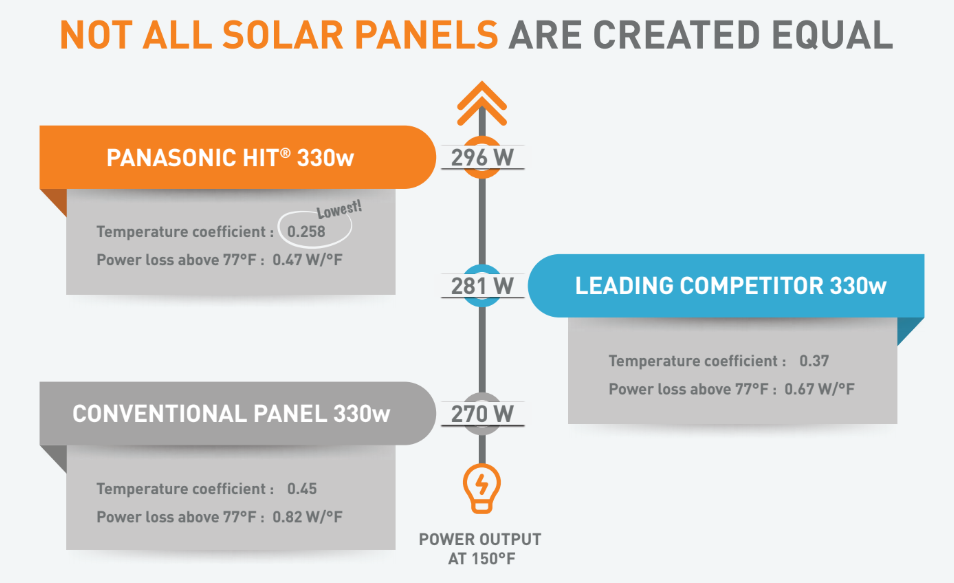
Solar panels require ample sunlight in order to operate effectively, this is why solar array output is calculated based on your areas peak sun hours and not at 12 hours. Under peak lighting conditions, such as in the summer, solar panels surface heat can increase up to 50°F above outdoor temperatures (and hotter than 150°F). This high heat can cause power loss, this power loss is measured by the temperature coefficient. As noted in the above chart, Panasonic also offers one of the industry’s lowest temperature coefficients which means it will perform better under peak sun hour conditions and, ultimately, produce more energy than conventional panels.
Warranty Period
Panasonic offers industry leading warranty periods of 25 year product and 25 year linear performance warranties. The product warranty exceeds the industry average of 10 year product warranty, and matches LG’s offering of 25 year product and performance warranties. In addition, at the 25 year mark, Panasonic HIT modules promise 90.76% nameplate output. This is around 10% more than the mid-range Canadian Solar (80.7%) and 8.76% more than then industry average of 82%. This differentiation is part of what gives Panasonic an edge in terms of your long-term investment on your solar panel system.
See Here: Panasonic Warranty
Similar offerings in efficiency from other tier-one manufacturers such as LG Solar come in at 87% of the total panel output at the 25 year benchmark. When comparing the two output efficiencies it is important to consider the wattage of your desired solar panel, a 360w solar panel from LG would have an overall higher output than a 330w from Panasonic. However, if the panels are around the same wattage, Panasonic wins in terms of module efficiency at the end of the respective 25 year warranty periods.
Panasonic Solar System Potential ROI
In order to gain a better understanding of the potential ROI period on a Canadian Solar System, we went ahead and designed a 7.92kW grid-tied, roof-top array.
This system includes: 24x Panasonic 330w HIT solar panels, 24x Enphase IQ7X microinverters, Enphase accessories and monitoring, and complete solar racking from IronRidge. The system is configured in a 2x12 design as outlined below.
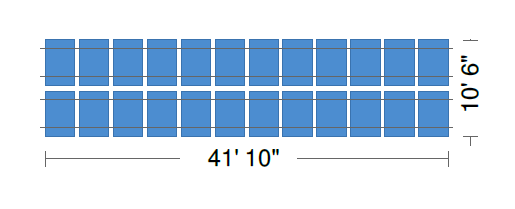
Panasonic 7.92kW Grid-Tied, Roof-Mount System
*Prices reflective of current pricing as of the posting of this article. Click on the item image to check current pricing. Does not include potential taxes and fees which may apply. Prospective system owners will also need a permit plan.
The above system averages to $14,586.24 before possible state level fees and solar energy tax rebates and incentives. This figure brings the system to $1.84/watt for the major components of the system. This is approximately $0.58/watt more than Hanwha Q Cells and $0.51/watt more than Canadian Solar. The cost per watt is $0.10 lower than their closest competitor, LG Solar.
The system should be producing 11,900kWh annually and approximately 991.7kWh per month. By taking the average cost of per kilowatt hour in the United States ($0.12/kWh) and multiplying it by the estimated monthly usage, we can determine how much money the system will save per month.
Assuming the system produces 991.7kWh/month, users can expect $119 in energy savings monthly. In order for the system to pay for itself (excluding rebates and incentives, and possible costs of installation) will take approximately 73.3 months, or a 6.10 year ROI period.
This ROI period is nearly 4 years less than that of LG and is more on par with mid-range modules which average around the same ROI period.
See Here: How to Size Your System
Solaris Recommendations
Panasonic is a great solution for a number of residential and commercial solar arrays. Their 96 cell design needs to be considered when factoring in what inverter to use for your system. However, the panels work with both micro and string inverters as well as optimizers, so interested installers do not need to concern themselves with lack of options.
Due to the cell design, Panasonic panels are wider than average panels. This may cause additional considerations if you are working with a small roof space or top of pole mount systems. Similar to the inverter offerings, Panasonic does work with a number of solar racking suppliers and custom solutions are possible when needed.
The cost of initially installing Panasonic panels is higher than mid-range modules and on par with other high range panels. However, Panasonic’s lower degradation rate and higher efficiency will likely result in a greater long term investment and energy output.
Panasonic manufactures some of the best, premium solar panels available in the market. They are regarded as the longest lasting, high-watt, top-efficiency solar panels for DIY systems and installation companies big and small. While their modules come in at a premium price point, so does the technology and materials included with it. System owners need not to fret over the lifespan of the modules or the companies longevity - these solar panels will be covered by the best solar panel warranty available anywhere.
We recommend Panasonic solar panels as the premium module selection for homeowners and system installers looking to purchase the highest quality modules available, long-term warranty periods, and best efficiency within it's class. While the cost per watt is also among the highest in the industry, they are reflective of the materials used, technology, efficiency, and reliability guaranteed by their company's warranty.
Learn More: LG Solar Panels: The Complete Review




